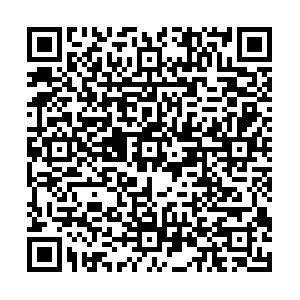Epidemiological characteristics and trends of non-suicidal self-injury among middle school students in Jiading District of Shanghai from 2015 to 2023
-
摘要:
目的 分析上海市嘉定区2015—2023年中学生非自杀性自伤(NSSI)行为的流行特征和变化趋势,为学生NNSI防控工作的开展提供依据。 方法 采用分层整群随机抽样方法,2015—2023年在上海市嘉定区每2年开展一次,共计5次“上海市青少年健康危险行为调查”,从中学学段(初中、高中)共选取5 231名中学生进行问卷调查。组间比较采用χ2检验或χ2趋势检验,采用JointPoint 5.0软件对变化趋势进行分析,用年度变化百分率(APC)进行评价。采用二分类Logistic回归模型分析中学生NSSI行为的相关因素。 结果 2023年嘉定区中学生NSSI报告率为14.2%,初中生报告率(17.1%)高于高中生(11.1%),女生(19.2%)高于男生(10.0%)(χ2值分别为10.04,23.21,P值均<0.01)。2015—2023年中学生NSSI报告率呈增长趋势,由2015年的8.6%上升至2023年的14.2%(χ趋势2=22.25),APC为6.64%(t=3.49),其中女生NSSI报告率APC为9.79%(t=3.20)(P值均<0.05)。在发生NSSI行为的中学生中,≥6次占比由2015年的10.8%上升至2023年的19.2%(χ趋势2=6.57,P<0.05)。多因素Logistic回归分析结果显示,女生、初中生、失眠、有抑郁情绪及饮酒学生发生NSSI的风险相比男生、高中生、不失眠、无抑郁情绪及不饮酒的学生高(OR值分别为1.71,1.96,3.44,4.76,1.77,P值均<0.05)。 结论 嘉定区2015—2023年中学生NSSI报告率逐年上升,且反复NSSI的比例呈上升趋势。应及早针对中学生、特别是初中生和女生采取干预措施,控制NSSI的发生和发展。 Abstract:Objective To analyze the epidemiological characteristics and changing trends of non-suicidal self-injury (NSSI) behaviors among middle school students in Jiading District of Shanghai, from 2015 to 2023, so as to provide a basis for the development of NSSI prevention and control measures among students. Methods Using a stratified cluster random sampling method, a total of five times for Shanghai Adolescent Health Risk Behavior Surveys were conducted for every two years in Jiading District of Shanghai from 2015 to 2023. A total of 5 231 middle school students from junior high schools and senior high schools were selected for questionnaire surveys. Intergroup comparisons were performed using the χ2 test or the χ2 trend test, and the JointPoint 5.0 software was used to analyze the changing trends, with the annual percent change (APC) used for evaluation. A binary Logistic regression model was employed to analyze the related factors of NSSI behavior among middle school students. Results In 2023, the reported NSSI rate among middle school students in Jiading District was 14.2%. The rate was significantly higher among junior high school students (17.1%) than that among senior high school students (11.1%), and higher among females (19.2%) than that among males (10.0%) (χ2=10.04, 23.21, both P < 0.01). From 2015 to 2023, the overall reported NSSI rate showed an increasing trend, rising from 8.6% in 2015 to 14.2% in 2023 (χtrend2=22.25), with an APC of 6.64% (t=3.49), and the APC for girls was 9.79% (t=3.20) (all P < 0.05). Among students reporting NSSI, the proportion experiencing ≥6 episodes increased from 10.8% in 2015 to 19.2% in 2023 (χtrend2=6.57, P < 0.05). Multivariate Logistic regression analysis indicated that girls, junior high school students, those with insomnia, depressive emotion and drinkers had higher risks of NSSI, compared to boys, senior high school students, those without insomnia, non-depressive emotion students and non-drinkers (OR=1.71, 1.96, 3.44, 4.76, 1.77, all P < 0.05). Conclusions The reported rate of NSSI among middle school students in Jiading District of Shanghai, increased annually from 2015 to 2023, and the proportion of repeated NSSI also showed an upward trend. Early intervention measures targeting middle school students, especially junior high school students and females, should be implemented to prevent and control its occurrence and development. -
Key words:
- Self-injurious behavior /
- Mental health /
- Regression analysis /
- Students
-
表 1 上海市嘉定区中学生2015—2023年NSSI行为报告率及变化趋势
Table 1. Trend of reporting rates of NSSI behavior among middle school students in Jiading District, Shanghai from 2015 to 2023
组别 选项 2015 2017 2019 2021 2023 APC(95%CI)/% t值 人数 NSSI人数 人数 NSSI人数 人数 NSSI人数 人数 NSSI人数 人数 NSSI人数 性别 男 443 38(8.6) 409 37(9.0) 618 61(9.9) 666 75(11.3) 730 73(10.0) 2.44(-1.88~6.95) 1.78 女 309 27(8.7) 427 44(10.3) 419 73(17.4) 584 111(19.0) 626 120(19.2) 9.79(0.06~20.46) 3.20* 学段 初中 276 28(10.1) 596 53(8.9) 628 96(15.3) 699 114(16.3) 700 120(17.1) 8.32(-0.94~18.43) 2.85 高中 476 37(7.8) 240 28(11.7) 409 38(9.3) 551 72(13.1) 656 73(11.1) 4.22(-4.49~13.73) 1.51 合计 752 65(8.6) 836 81(9.7) 1 037 134(12.9) 1 250 186(14.9) 1 356 193(14.2) 6.64(0.57~13.08) 3.49* 注: ()内数字为报告率/%;*P < 0.05。 表 2 上海市嘉定区2015—2023年不同性别中学生NSSI行为频次报告率
Table 2. Reporting rates of NSSI behavior frequencies among middle school students by sex in Jiading District, Shanghai from 2015 to 2023
年份 男生 女生 合计 人数 1次 2~5次 ≥6次 人数 1次 2~5次 ≥6次 人数 1次 2~5次 ≥6次 2015 443 19(4.3) 13(2.9) 6(1.4) 309 15(4.9) 11(3.6) 1(0.3) 752 34(4.5) 24(3.2) 7(0.9) 2017 409 25(6.1) 10(2.4) 2(0.5) 427 26(6.1) 12(2.8) 6(1.4) 836 51(6.1) 22(2.6) 8(1.0) 2019 618 33(5.3) 21(3.4) 7(1.1) 419 30(7.2) 33(7.9) 10(2.4) 1 037 63(6.1) 54(5.2) 17(1.6) 2021 666 42(6.3) 24(3.6) 9(1.4) 584 46(7.9) 36(6.2) 29(5.0) 1 250 88(7.0) 60(4.8) 38(3.0) 2023 730 40(5.5) 21(2.9) 12(1.6) 626 51(8.1) 44(7.0) 25(4.0) 1 356 91(6.7) 65(4.8) 37(2.7) 注: ()内数字为报告率/%。 表 3 上海市嘉定区2015—2023年不同性别中学生发生NSSI行为不同频次构成比分布
Table 3. Distribution of different composition ratios of NSSI behavior among middle school students by sex in Jiading District, Shanghai from 2015 to 2023
年份 男生 女生 合计 1次 2~5次 ≥6次 1次 2~5次 ≥6次 1次 2~5次 ≥6次 2015 19(50.0) 13(34.2) 6(15.8) 15(55.6) 11(40.7) 1(3.7) 34(52.3) 24(36.9) 7(10.8) 2017 25(67.6) 10(27.0) 2(5.4) 26(59.1) 12(27.3) 6(13.6) 51(63.0) 22(27.2) 8(9.9) 2019 33(54.1) 21(34.4) 7(11.5) 30(41.1) 33(45.2) 10(13.7) 63(47.0) 54(40.3) 17(12.7) 2021 42(56.0) 24(32.0) 9(12.0) 46(41.4) 36(32.4) 29(26.1) 88(47.3) 60(32.3) 38(20.4) 2023 40(54.8) 21(28.8) 12(16.4) 51(42.5) 44(36.7) 25(20.8) 91(47.2) 65(33.7) 37(19.2) 注: ()内数字为构成比/%。 表 4 上海市嘉定区2023年中学生NSSI行为相关因素Logistic回归分析(n=1 356)
Table 4. Logistic regression analysis of factors affecting NSSI behavior among middle school students in Jiading District, Shanghai in 2023(n=1 356)
自变量 选项 单因素 多因素 OR值(95%CI) P值 OR值(95%CI) P值 学段 高中 1.00 1.00 初中 1.65(1.21~2.26) < 0.01 1.96(1.33~2.90) < 0.01 性别 男 1.00 1.00 女 2.13(1.56~2.92) < 0.01 1.71(1.20~2.43) < 0.01 父亲文化 初中 1.00 1.00 程度 高中 1.07(0.71~1.61) 0.74 1.10(0.60~1.70) 0.96 大专/大学 0.86(0.58~1.26) 0.43 0.83(0.492~1.40) 0.48 研究生及以上 1.68(0.85~3.32) 0.14 1.40(0.560~3.50) 0.47 母亲文化 初中 1.00 1.00 程度 高中 0.98(0.66~1.47) 0.93 1.10(0.66~1.82) 0.72 大专/大学 0.97(0.67~1.41) 0.89 1.35(0.81~2.25) 0.25 研究生及以上 1.94(0.83~4.50) 0.12 1.80(0.57~5.70) 0.32 家庭类型 核心家庭 1.00 1.00 单亲 1.66(0.99~2.79) 0.06 1.63(0.90~2.96) 0.11 重组 2.22(0.93~5.30) 0.07 1.97(0.73~5.18) 0.18 隔代 1.92(1.01~3.64) 0.05 1.76(0.85~3.65) 0.13 独生子女 否 1.00 1.00 是 1.03(0.75~1.42) 0.84 0.83(0.58~1.21) 0.34 孤独 否 1.00 1.00 是 3.81(2.60~5.57) < 0.01 1.54(0.99~2.40) 0.06 学习压力 否 1.00 1.00 是 5.24(3.05~9.00) < 0.01 1.72(0.92~3.24) 0.09 失眠 否 1.00 1.00 是 6.52(4.25~10.02) < 0.01 3.44(2.09~5.66) < 0.01 抑郁情绪 否 1.00 1.00 是 6.44(4.55~9.11) < 0.01 4.76(3.24~6.97) < 0.01 饮酒 否 1.00 1.00 是 2.67(1.85~3.85) < 0.01 1.77(1.16~2.71) 0.01 网络成瘾 否 1.00 1.00 是 2.40(1.34~4.29) < 0.01 0.68(0.35~1.35) 0.27 -
[1] TSCHAN T, SCHMID M, IN-ALBON T. Parenting behavior in families of female adolescents with nonsuicidal self-injury in comparison to a clinical and a nonclinical control group[J]. Child Adolesc Psychiatry Ment Health, 2015, 9: 17. doi: 10.1186/s13034-015-0051-x [2] 袁兆康, 文小桐. 中国青少年健康危险行为研究设计与流行现状[J]. 中国学校卫生, 2019, 40(4): 638-640. doi: 10.16835/j.cnki.1000-9817.2019.04.046YUAN Z K, WEN X T. Research design and current situation of health-risk behaviors among Chinese adolescents[J]. Chin J Sch Health, 2019, 40(4): 638-640. (in Chinese) doi: 10.16835/j.cnki.1000-9817.2019.04.046 [3] LIM K S, WONG C H, MCINTYRE R S, et al. Global lifetime and 12-month prevalence of suicidal behavior, deliberate self-harm and non-suicidal self-injury in children and adolescents between 1989 and 2018: a Meta-analysis[J]. Int J Environ Res Public Health, 2019, 16(22): 4581. doi: 10.3390/ijerph16224581 [4] 连孟泽, 丁瑜, 刘小玲, 等. 青少年非自杀性自伤研究进展[J]. 职业与健康, 2023, 39(8): 1135-1141.LIAN M Z, DING Y, LIU X L, et al. Review of non-suicidal self-injury in adolescents[J]. Occup Health, 2023, 39(8): 1135-1141. (in Chinese) [5] 韩阿珠, 徐耿, 苏普玉. 中国大陆中学生非自杀性自伤流行特征的Meta分析[J]. 中国学校卫生, 2017, 38(11): 1665-1670. doi: 10.16835/j.cnki.1000-9817.2017.11.019HAN A Z, XU G, SU P Y. A Meta-analysis of characteristics of non-suicidal self-injury among middle school students in mainland China[J]. Chin J Sch Health, 2017, 38(11): 1665-1670. (in Chinese) doi: 10.16835/j.cnki.1000-9817.2017.11.019 [6] 尹慧芳, 徐浩林, 刘肇瑞, 等. 青少年非自杀性自伤行为的理论模型研究[J]. 中国心理卫生杂志, 2022, 36(8): 707-713.YIN H F, XU H L, LIU Z R, et al. A review of theoretical models of non-suicidal self-injury (NSSI) in adolescents[J]. Chin Ment Health J, 2022, 36(8): 707-713. (in Chinese) [7] 周鑫, 蒋琬婷. 青少年非自杀性自伤行为的研究现状[J]. 精神医学杂志, 2021, 34(4): 381-384.ZHOU X, JIANG W T. Research status of non-suicidal self-injury behaviors among adolescents[J]. J Psychiatry, 2021, 34(4): 381-384. (in Chinese) [8] POUDEL A, LAMICHHANE A, MAGAR K R, et al. Non suicidal self injury and suicidal behavior among adolescents: co-occurrence and associated risk factors[J]. BMC Psychiatry, 2022, 22(1): 96. doi: 10.1186/s12888-022-03763-z [9] 袁家盛, 永忠甜, 王凯, 等. 社会生态学风险因素与中学生非自杀性自伤行为的关联[J]. 现代预防医学, 2024, 51(5): 848-853.YUAN J S, YONG Z T, WANG K, et al. The relationship between socio-ecological risk factors and non-suicidal self-injury behavior of middle school students[J]. Mod Prev Med, 2024, 51(5): 848-853. (in Chinese) [10] 季成叶. 青少年健康危险行为监测: 学校卫生工作的重要前沿[J]. 中国学校卫生, 2009, 30(2): 99-105.JI C Y. Monitoring of adolescent health risk behaviors: an important frontier in school health work[J]. Chin J Sch Health, 2009, 30(2): 99-105. (in Chinese) [11] 杨妍婷, 严琼, 张喆, 等. 上海市2004—2019年青少年健康危险行为特征和变化趋势[J]. 中国学校卫生, 2022, 43(8): 1148-1151. doi: 10.16835/j.cnki.1000-9817.2022.08.007YANG Y T, YAN Q, ZHANG Z, et al. Characteristics and trend of adolescent health-risk behaviors in Shanghai from 2004 to 2019[J]. Chin J Sch Health, 2022, 43(8): 1148-1151. (in Chinese) doi: 10.16835/j.cnki.1000-9817.2022.08.007 [12] YOUNG K S. Internet addiction: the emergence of a new clinical disorder[J]. Gyber Psychol Behav, 1998, 1(3): 237-244. doi: 10.1089/cpb.1998.1.237 [13] 沈艳辉, 江初, 沈源, 等. 北京海淀区中学生自我伤害和自杀相关行为现状及影响因素分析[J]. 中国公共卫生, 2020, 36(6): 951-955.SHEN Y H, JIANG C, SHEN Y, et al. Behaviors and influencing factors of self-harm and suicide among high school students in Haidian district of Beijing: a retrospective analysis[J]. Chin J Public Health, 2020, 36(6): 951-955. (in Chinese) [14] 赵文欣, 田萌, 陈思远, 等. 贵州中学生非自杀性自伤相关因素的网络分析[J]. 中国学校卫生, 2025, 46(1): 92-95. doi: 10.16835/j.cnki.1000-9817.2025022ZHAO W X, TIAN M, CHEN S Y, et al. Network analysis of factors related to non-suicidal self-injury among middle school students in Guizhou Province[J]. Chin J Sch Health, 2025, 46(1): 92-95. (in Chinese) doi: 10.16835/j.cnki.1000-9817.2025022 [15] COMACCHIO C, LASALVIA A, RUGGERI M. Current evidence of childhood traumatic experiences in psychosis-focus on gender differences[J]. Psychiatry Res, 2019, 281(8): 112507. [16] 徐慧琼, 万宇辉, 许韶君. 青少年非自杀性自伤行为与自杀行为关联的理论模型研究进展[J]. 中国学校卫生, 2019, 40(2): 314-317. doi: 10.16835/j.cnki.1000-9817.2019.02.045XU H Q, WAN Y H, XU S J. Research progress on the theoretical model of the association between non-suicidal self-injury behaviors and suicidal behaviors among adolescents[J]. Chin J Sch Health, 2019, 40(2): 314-317. (in Chinese) doi: 10.16835/j.cnki.1000-9817.2019.02.045 [17] ESSAU C A, LEWINSOHN P M, SEELEY J R, et al. Gender differences in the developmental course of depression[J]. J Affect Disord, 2010, 127(1-3): 185-190. doi: 10.1016/j.jad.2010.05.016 [18] 刘洋, 张伟波, 葛聪聪, 等. 2015年上海市初中生焦虑抑郁情绪现状调查[J]. 中国健康教育, 2018, 34(4): 299-303.LIU Y, ZHANG W B, GE C C, et al. A survey on anxiety and depression among junior high school students, in Shanghai, 2015[J]. Chin J Health Educ, 2018, 34(4): 299-303. (in Chinese) [19] 杨春, 张瑞. 抑郁障碍青少年自伤行为影响因素分析[J]. 中国学校卫生, 2021, 42(6): 879-882. doi: 10.16835/j.cnki.1000-9817.2021.06.019YANG C, ZHANG R. Associated factors of non-suicidal self-injury behavior in adolescents with depression disorder[J]. Chin J Sch Health, 2021, 42(6): 879-882. (in Chinese) doi: 10.16835/j.cnki.1000-9817.2021.06.019 [20] 肖青青, 夏倩, 黄雪花. 青少年非自杀性自伤危险因素的Meta分析[J]. 临床精神医学杂志, 2021, 31(2): 105-109.XIAO Q Q, XIA Q, HUANG X H. Meta analysis of the risk factors of non-suicidal self-injury in adolescents[J]. J Clin Psychiatry, 2021, 31(2): 105-109. (in Chinese) [21] 袁勇, 干敏雷, 尹小俭, 等. 青少年非自杀性自伤行为与抑郁症状的相关性[J]. 中国学校卫生, 2023, 44(5): 659-663. doi: 10.16835/j.cnki.1000-9817.2023.05.005YUAN Y, GAN M L, YIN X J, et al. Correlation analysis between non-suicidal self-injury behavior and depressive symptoms in adolescent[J]. Chin J Sch Health, 2023, 44(5): 659-663. (in Chinese) doi: 10.16835/j.cnki.1000-9817.2023.05.005 [22] 罗媛, 任鹏宇, 马臣萃, 等. "双减"政策下中学生学习倦怠、睡眠质量对非自杀性自伤行为的影响[J]. 中国健康教育, 2024, 40(1): 51-55.LUO Y, REN P Y, MA C C, et al. The impact of learning burnout and sleep quality on non-suicidal self-injury behaviors among middle school students under the Double Reduction policy[J]. Chin J Health Educ, 2024, 40(1): 51-55. (in Chinese) [23] 归冰, 何影, 卢葳, 等. 青少年饮酒与自伤行为关系[J]. 中国学校卫生, 2021, 42(7): 1052-1055. doi: 10.16835/j.cnki.1000-9817.2021.07.021GUI B, HE Y, LU W, et al. Association of drinking behavior and self-injury behavior in adolescents[J]. Chin J Sch Health, 2021, 42(7): 1052-1055. (in Chinese) doi: 10.16835/j.cnki.1000-9817.2021.07.021 -

 点击查看大图
点击查看大图
计量
- 文章访问数: 3
- HTML全文浏览量: 3
- PDF下载量: 0
- 被引次数: 0





 下载:
下载: